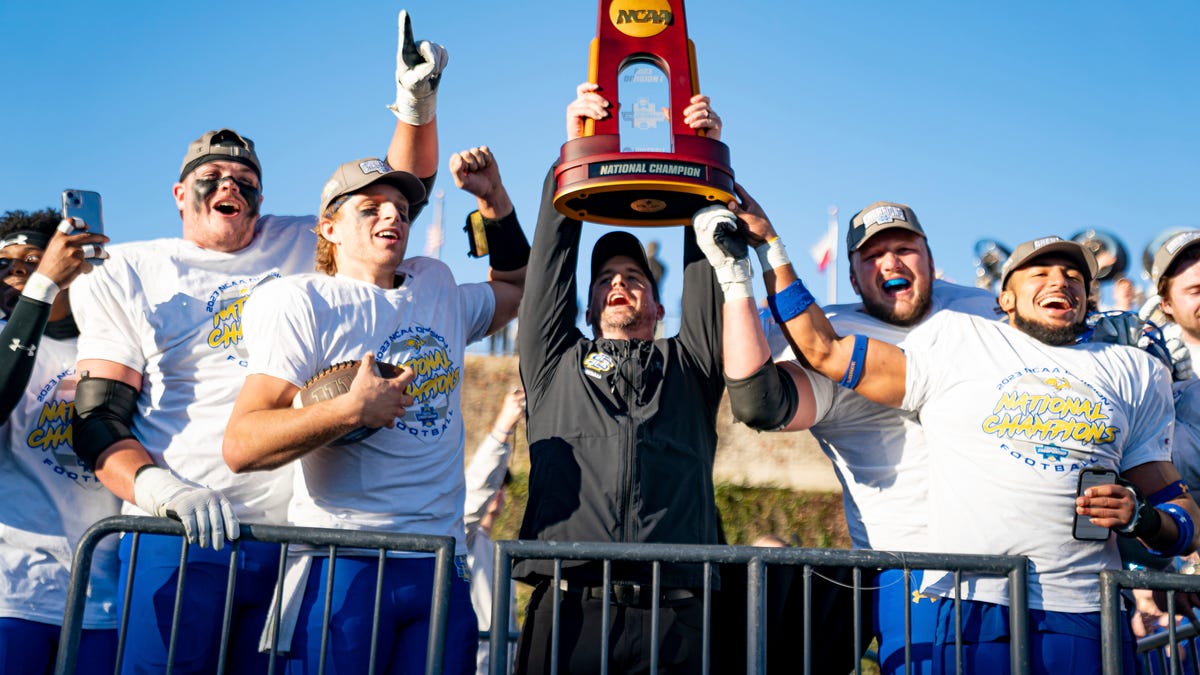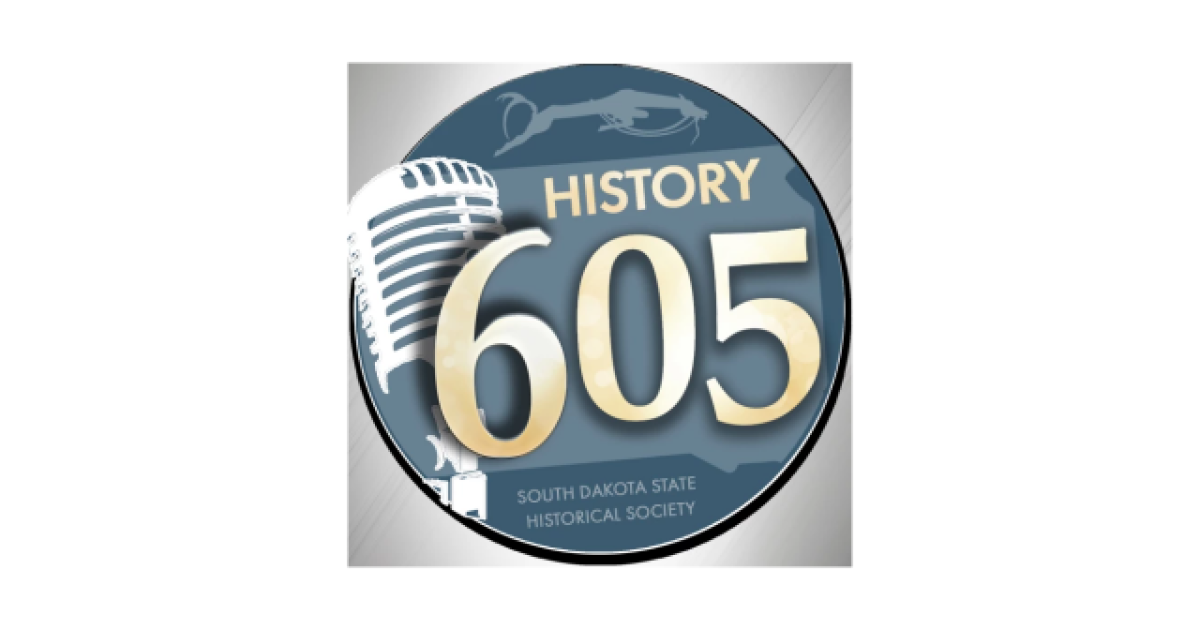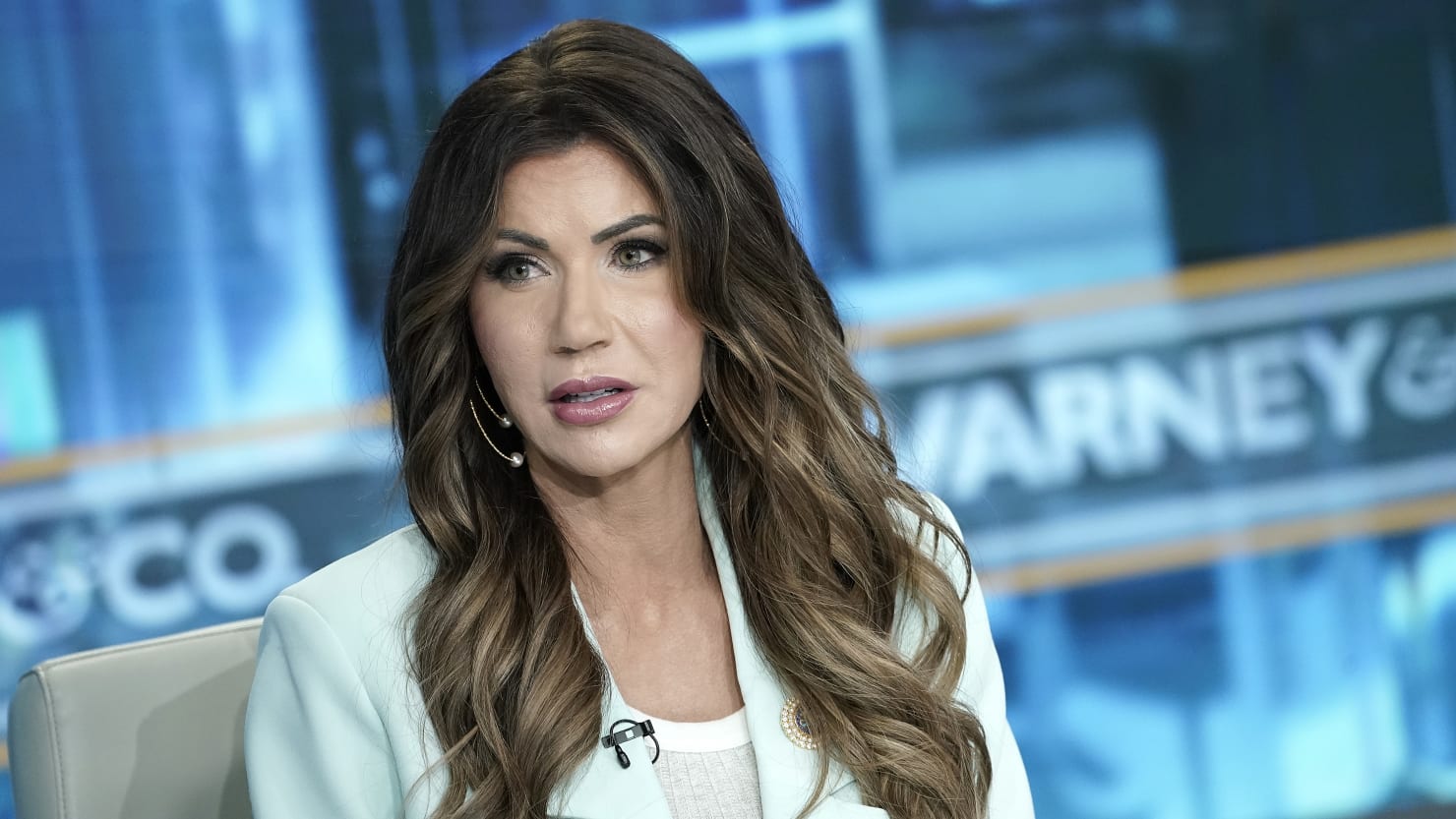South Dakota
Top South Dakota sports storylines to watch for in 2024

As we continue to ring in the new year, we’re breaking down some of the biggest South Dakota sports storylines of 2024.
With South Dakota State football coming off their second consecutive FCS national championship, South Dakota having their most successful season at the FCS level, and both universities’ basketball teams vying for a spot in the NCAA Tournament, there’s going to be plenty to watch for and look forward to.
The Argus Leader has laid it out for you. Here are the top South Dakota sports storylines in 2024.
Will any SDSU, USD basketball teams make it to the NCAA Tournament?
Both South Dakota State basketball teams have a better chance of winning their respective conference tournament and earning an automatic bid into the NCAA Tournament than they do getting an at-large bid.
Both USD basketball teams are in rebuilds under first or second-year head coaches. The men’s team is 8-10 overall and 1-2 in conference under the direction of first-year head coach Eric Peterson. It’s still early, but the men’s team doesn’t look like conference contenders thus far.
The USD women’s team has had a more promising start, going 12-6 through their first 18 games but are also 1-2 in Summit League play under second-year head coach Kayla Karius. The Coyotes have talent, they’re led by junior guard Grace Larkins, who is one of two Summit League players named to the Becky Hammon Player of the Year award watchlist, so I still give them a shot to put together a run.
More: South Dakota women’s basketball suffers soul-searching defeat against Oral Roberts
The South Dakota State men’s basketball team currently has a 9-8 overall record. The Jackrabbits are currently 2-0 in conference play and coming off a season in which they made it to the Summit League semifinals.
The Jackrabbits women’s team won the Summit League last season and made a run to the second round of the NCAA Tournament. They’re looking poised to make another run in 2024 despite some early-season injury woes. SDSU lost Kallie Theisen and Haleigh Timmer to season-ending injuries in late September and have had to deal with shorter-term injuries throughout non-conference play and are still five games over .500. South Dakota State is currently 2-0 in conference and has strong coaching and talent to contend for another Summit League title.
Does South Dakota State football have the depth to replace seniors after dominant 2023?
The Jackrabbits football team had a perfect year.
They didn’t lose a single game in the calendar year and are still in the midst of a 29-game winning streak that extends back to 2022. They won another FCS national title, adding that to their expanding trophy cabinet. Junior quarterback Mark Gronowski also became the program’s first Walter Payton Award winner.
More: Mark Gronowski is South Dakota State’s most accomplished football player after prolific 2023 season
South Dakota State was a senior-laden group this season that capitalized on their experience, but they’ll lose team cornerstones in Mason McCormick, Garret Greenfield, Jason Freeman, Isaiah Davis and the Janke twins, just to name a few, to the NFL Draft. There have also been questions about whether Gronowski will return to SDSU. Getting him back is crucial to any FCS championship conversations.
Aside from the Gronowski piece of this, do they have the talent and depth to make up for those senior losses?
Next season will look different than 2023. It’s hard to imagine the Jackrabbits extending the 29-game winning streak past their season opener against Big 12 Conference foe Oklahoma State, but the conference season will also test SDSU.
It will be on 2023 Rimington winner and Jackrabbits center Gus Miller to anchor the offensive line for running backs Amar and Angel Johnson, who will take on larger roles with Davis no longer on the team. On defense, tackle Jarod DePriest, linebackers Graham Spalding and Adam Bock, and defensive backs Dalys Beanum and Tucker Large will be returning.
SDSU will be young at the wide receiver position, but they have talent. Rising sophomore Griffin Wilde showed real flashes as a true freshman and should slide into one of the open wide receiver slots. Devon Cole and Grahm Goering both received limited runs at wide receiver and should have a shot at that second spot next season. The Jackrabbits also bring in Lincoln wide receiver Jack Smith, who could have a real opportunity to get playing time right away.
Can USD football improve on a historic season?
After going 3-8 a season ago, South Dakota responded with their best season in program history.
The Coyotes won 10 games for the first time in the program’s time in the FCS, this was also the first time they entered the FCS playoffs as a seeded team, and the first time they played in a quarterfinal.
More: South Dakota’s dream season comes to an end: Bison dominate in the DakotaDome
USD finished the regular season 9-2 with three wins over top-10 teams and went 7-1 in the Missouri Valley Conference.
The big question is where do they go from here?
The Coyotes are expected to return most of their starters on offense, with quarterback Aidan Bouman, running back Travis Theis and wide receiver Carter Bell running it back with South Dakota. They lost Nate Thomas to Idaho but have great depth in the running back room.
Another year in Josh Davis’s offensive system should make the team better offensively and defensively they have a solid base to build off of in 2024 with Myles Harden, and Shahid Barros among others returning.
Who will emerge as 11AAA favorites after Lincoln’s dominant run?
Lincoln football completed their dream season in 2023, going a perfect 12-0 en route to the 11AAA state championship. The Patriots were led by quarterback Tate Schafer and wide receiver Jack Smith, but next year Schafer and Smith will be playing at the University of Sioux Falls and South Dakota State respectively. On defense, they also graduate key starters Brycen Mitchell and Sawyer Tolk.
More: Lincoln completes perfect season, wins 11AAA state football championship over O’Gorman 31-7
That begs the question, will Lincoln be able to remain competitive without the cornerstones from their 2023 season? Or will a new team emerge? It certainly feels wide open.
Harrisburg and Brandon Valley return talented players in Tigers quarterback Sam Knuth and Lynx wide receiver Landon Dulaney while Washington and Jefferson both bring back senior play-callers with another year of experience under their belt.
Jonathan Fernandez covers high school and college sports for the Argus Leader. Contact him at jfernandez1@argusleader.com. Follow him on Twitter at @JFERN31

South Dakota
History 605 S4, Ep 6: Citibank and South Dakota

In this episode we speak with Sean Vanatta who has written “Plastic Capitalism: Banks, Credit Cards, and the End of Financial Control.” Vanatta describes how Citibank and South Dakota changed the credit card industry in the United States. An unconnected series of events that involves the US Supreme Court, the Federal Reserve, the South Dakota Legislature and the national demand for credit cards brings together two very different but desperate entities: the state of South Dakota led by Governor Bill Janklow, and Citibank, a large international New York bank led by President Walter Wriston. Their desperate need for one another changed South Dakota’s economy as well as consumer credit for millions of Americans. It’s all an amazing story of coincidences that’s important to part of South Dakota’s history. For more, the book can be found here: Plastic Capitalism (yale.edu)
South Dakota
Kristi Noem Made Yet Another False Claim in Her Book

Kristi Noem just can’t get her facts straight. After a flopped press tour for her new book—where she confronted questions over anecdotes on meeting North Korean ruler Kim Jong Un (she didn’t) and killing her dog (she did)—Noem also falsely claimed in her book that Sen. Mike Rounds (R-SD) called for former President Donald Trump to drop out in 2016. Noem claimed that Rounds and the “entire delegation in South Dakota was not supportive of Trump” after the Access Hollywood tape came out. “Every one of the Republicans called for Trump to drop out of the race, which meant they believed Hillary Clinton should be the next president. Amazing, right?” she wrote. But Rounds’ camp is contesting this. “We have not read the book, but someone pointed out that among the inaccuracies, there was one that referenced Sen. Rounds,” Rounds spokeswoman Lydia Hall told The Dakota Scout. “We’ve asked the publisher to correct that error in their next revision and they confirmed that they are making the correction after reviewing the facts.”
Read it at The Dakota Scout
South Dakota
Survey says nearly two-thirds of SD educators use Indigenous standards • South Dakota Searchlight

Survey results indicate nearly two-thirds of South Dakota public school educators are teaching the Oceti Sakowin Essential Understandings, but the number of respondents is lower than the last survey.
The essential understandings are a set of standards approved in 2018 for teaching students about Native American culture and history. “Oceti Sakowin” is the collective term for Lakota, Dakota and Nakota speaking Native Americans, many of whom live in South Dakota. There are nine tribal nations within the state.
About 62% of teachers are using the standards, based on a survey conducted by the state Department of Education in 2023 — a “remarkable increase” from 45% in 2021, said Fred Osborn, director of the Office of Indian Education, which is under the supervision of the state Department of Tribal Relations. He presented the survey results to the Indian Education Advisory Council earlier this month.
Use of the standards is optional. The survey is used to understand how the standards are being implemented, and to help state officials encourage statewide adoption.
“The key is there’s improvement,” Osborn said. “It’s not perfect yet. There’s still work to be done, but we’ve come a long way from 45% of teachers. We hope that increases every year.”
Osborn added that the Office of Indian Education provided 10,000 copies of books on the Oceti Sakowin Essential Understandings through a Bush Foundation grant since the first survey, and sent out education packets for all grade levels last fall.
Fewer survey responses
Only about 385 educators took part in the 2023 survey, compared to 554 in 2021.
The 2023 survey also does not list how many public school districts were represented in the survey, whereas 2021’s survey had responses from 125 of the state’s 149 school districts. The school district identification question was changed between 2021 and 2023, said department spokesperson Nancy Van Der Weide. The department does not have any data to determine how many school districts were represented in the latest survey.
Removing the school district identification question allowed participants more anonymity, Van Der Weide told South Dakota Searchlight.
Navajo leaders outraged after a Lakota student’s tribal regalia was removed at graduation
Neither Osborn nor any members of the council addressed the potential impact of fewer responses on the validity of the survey results. The survey was voluntary and available for one month, Van Der Weide said, with a notice placed in a newsletter sent to teachers throughout the state.
“Those educators who did respond provided informed recommendations,” Van Der Weide said in an emailed statement. “Some of those were educators who already incorporate a lot of OSEUs in their classrooms, while others were those who wanted to make them a part of their instruction and responded with ideas for tools that would help them to incorporate the standards into their classrooms.”
Advisory council member Sherry Johnson, tribal education director for the Sisseton Wahpeton Oyate, helped shaped the standards and is participating in the standards update. She doubts the survey is an accurate representation of how the standards are being used in the state.
“We have pockets of the state that are doing well, but it’s not pervasive. It’s not required,” Johnson said. “If nothing else, there should be direct teacher training and a mandate to have this Indian education for all.”
Megan Deal, a second-grade teacher in Pierre and a member of the advisory council, said her school participated in a pilot program to help create lesson plans for standards at each grade level, but not all teachers incorporated the teachings into their classrooms.
“I don’t think they’re being taught at very many schools around the state at this time,” Deal said.
Council member Brian Wagner, tribal education director with the Lower Brule Sioux Tribe, said he is concerned about the lack of “teeth” with the standards. Lawmakers have introduced bills to require use of the Oceti Sakowin Essential Understandings in classrooms, but those efforts have failed in the Legislature.
“Knowledge is power,” Wagner said. “If people don’t learn about history, then we risk repeating it, and unfortunately the history repeating would be the racism and the discrimination that many tribal members have experienced because people don’t understand tribal sovereignty or the treaties and the treaty rights.”
Impact expected from social studies standards
Though the standards are optional, said Secretary of South Dakota Department of Education Joseph Graves, the new social studies standards that will be implemented by 2025 will include references to the Oceti Sakowin Essential Understandings. Those will encourage more teachers to use the cultural standards, he said.
“We’re going to find more Native American history and culture being taught in the schools than ever before,” Graves said. “This is actually a move forward, not a move back. I think the social studies standards have gotten an unfair black eye, and I think once you see these in place you’ll find we’re teaching more of it rather than less and, I think, from an enlightened perspective.”
States were adding lessons about Native American history. Then came the anti-CRT movement
The social studies standards controversy started in 2021 because the department removed more than a dozen references to the Oceti Sakowin from a committee’s draft revision of social studies standards. After Gov. Kristi Noem formed a new work group and ordered the process to start over, the group produced standards that drew criticism for an emphasis on rote memorization over inquiry-based learning.
Graves added that the department plans to provide teachers with weekly materials to help them utilize the social studies standards and encourage them to use the Oceti Sakowin Essential Understandings.
According to the 2023 survey results, about 84% of educators said they were aware of the standards, and 77% said it is important to implement the standards in every classroom. Only 55% of teachers said they knew the concepts well enough to teach them, but that was an 18 point increase from 2021.
Nearly 40 administrators took part in their administrator survey in 2023, compared to 164 in 2021. The 2023 survey does not list how many public school districts were represented in the administrator survey.
Nearly 80% of administrators said it’s important to implement the standards in every classroom, but two-thirds of administrators indicated a lack of confidence to implement the standards in their schools, while 56% reported an uncertainty about how to integrate the standards and 44% cited a concern for the appropriateness of the content — an increase of 28 points from the 2021 survey.
The survey does not address how using the standards affects Native American student achievement, but Osborn said it would be “interesting to cross analyze” that.
GET THE MORNING HEADLINES DELIVERED TO YOUR INBOX
-

 News1 week ago
News1 week agoSkeletal remains found almost 40 years ago identified as woman who disappeared in 1968
-

 World1 week ago
World1 week agoIndia Lok Sabha election 2024 Phase 4: Who votes and what’s at stake?
-

 Politics1 week ago
Politics1 week agoTales from the trail: The blue states Trump eyes to turn red in November
-

 World1 week ago
World1 week agoBorrell: Spain, Ireland and others could recognise Palestine on 21 May
-

 World1 week ago
World1 week agoCatalans vote in crucial regional election for the separatist movement
-

 Movie Reviews1 week ago
Movie Reviews1 week ago“Kingdom of the Planet of the Apes”: Disney's New Kingdom is Far From Magical (Movie Review)
-

 Politics1 week ago
Politics1 week agoNorth Dakota gov, former presidential candidate Doug Burgum front and center at Trump New Jersey rally
-

 World1 week ago
World1 week agoUkraine’s military chief admits ‘difficult situation’ in Kharkiv region

















